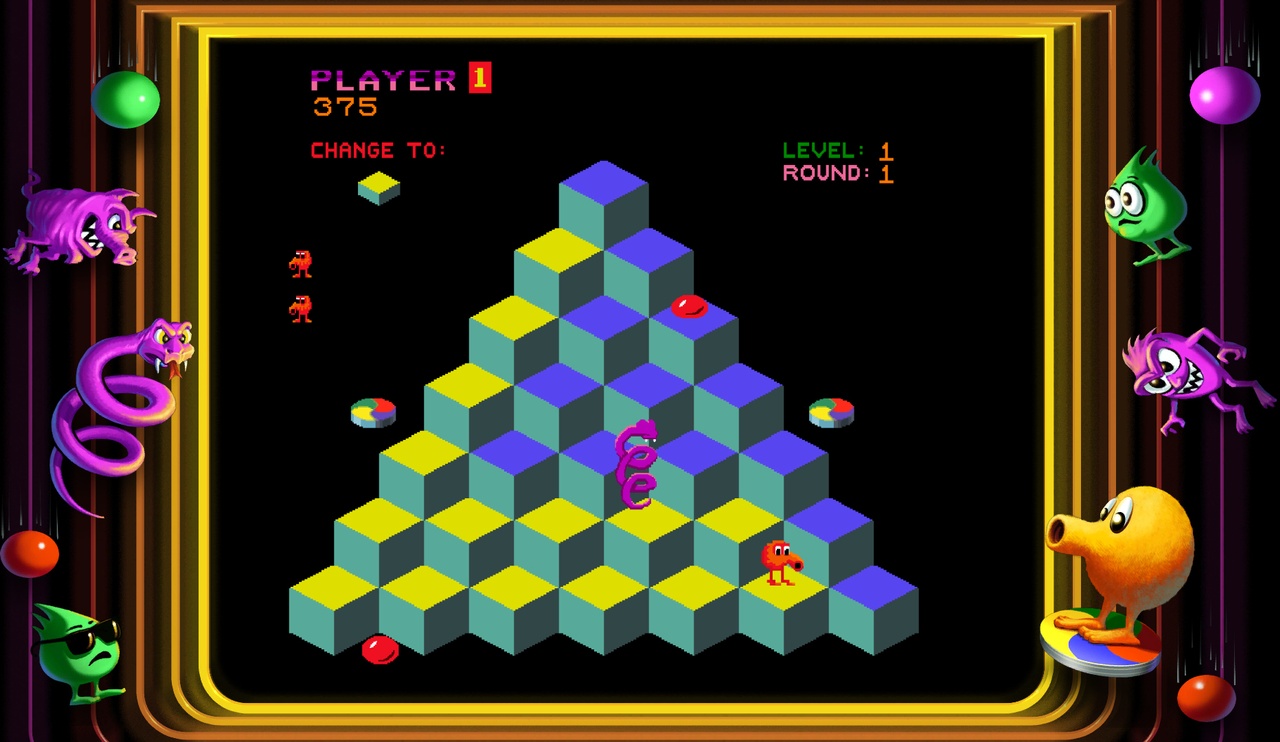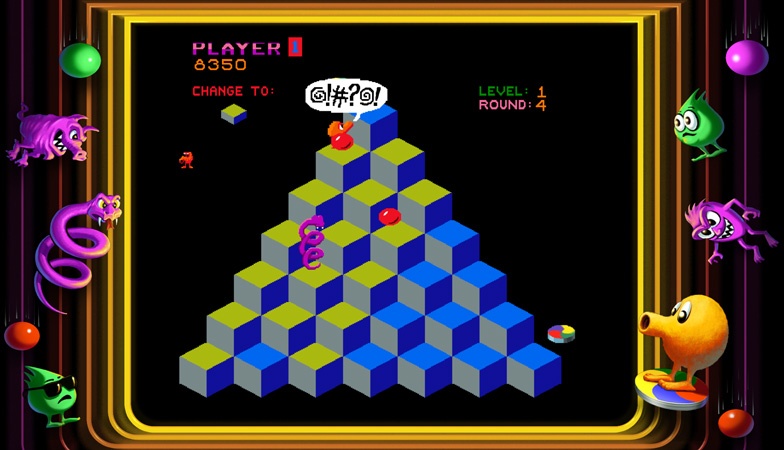Originally released to arcades in 1982, Q*bert was one of the rare arcade successes that led to larger licensing efforts. The fuzzy ball with two feet and a gigantic hose for a nose went on to star in his own Saturday morning cartoon, a pinball machine, a sequel, and plenty of other crazy licensed goods. In 2007, Q*bert has gained another distinction as the first arcade classic to appear as a downloadable game for the PlayStation 3. Available for $4.99, Q*bert is probably a must-own if you're a superfan of the original game, but this is a very bare-bones version of the game that could have used a few more features and options.

The point of Q*bert is to hop around on an M.C. Escher-like pyramid of cubes. When you hop, you change the color of the cube tops, and your goal is to change all of the tops to a specific color. You'll have to dodge balls that continually tumble down the pyramid, as well as more artificially intelligent creatures, like Coily the snake and the mixed-up duo of Ugg and Wrong-Way, who hop around on the sides of the cubes as if gravity applied totally differently to them. Aside from having a slightly faster movement speed, your only weapon in the fight against the bad guys is two discs that hover on the sides of the pyramid. Coily chases you wherever you go, and if you hop onto a disc before he can change direction, he'll hop off the side of the pyramid to his death while the disc carries you back up to the top of the pyramid safely. Later levels move more quickly, and the colors change on the cubes in a different way. Sometimes you'll need to hop on them more than once, and in later levels, the final target color doesn't lock in, so subsequent hops will change the cubes back to the wrong color.
This PlayStation 3 version of Q*bert is faithful to the original game with some minor changes. The original game had a joystick that was mounted diagonally, and you had to push in diagonal directions to hop. You can do that with the PlayStation 3's D pad or analog stick by default, or you can turn on the motion sensor and play by tilting the controller around--which isn't much fun. The sound in the PS3 version of the game is true to the original, though the pinball part that lived inside Q*bert cabinets--a loud thwacker that made a big thumping noise whenever you jumped off the pyramid and fell to your death, isn't a part of the package. Also, the graphics maintain the same style as the original game, but everything has been polished up a bit. The cube edges are smooth instead of jagged and pixelated, and the game's characters have been given similar treatment. There isn't any option to enable the original graphics, which is sort of a bummer if you're a purist.

You can play one-player or two-player alternating games locally. The only online functionality is a scoreboard, but the scoreboard holds only the top 100 scores--even though you can scroll down through hundreds of empty spots below the top 100 mark. There's no option to filter the scores to view your friends' scores, either, which is unfortunate.
If you just want to play Q*bert again, here you go. This is Q*bert. But without all of the bells and whistles that have become the standard for rereleased classics on modern consoles, this arcade classic feels a little flat. So on its own, setting aside whatever personal feelings you may have for the original game, it's difficult to recommend.